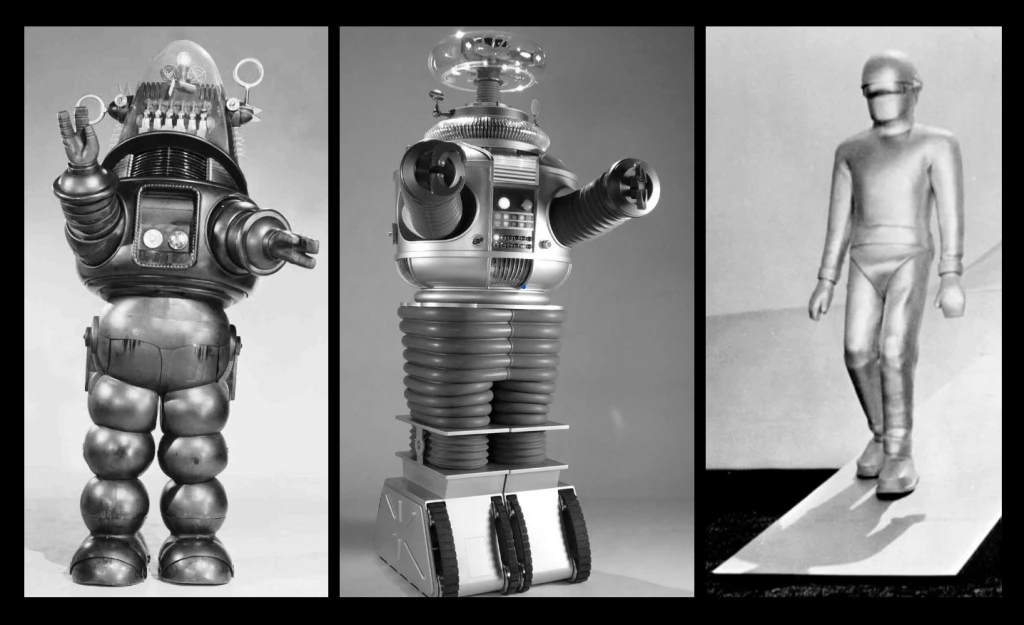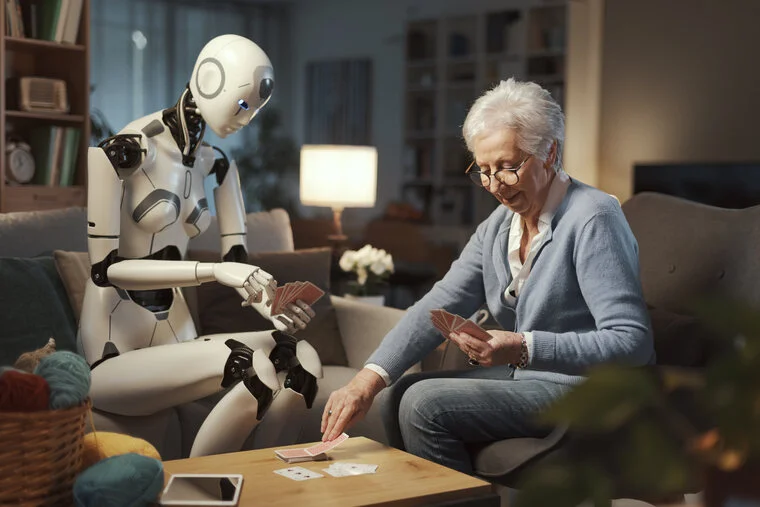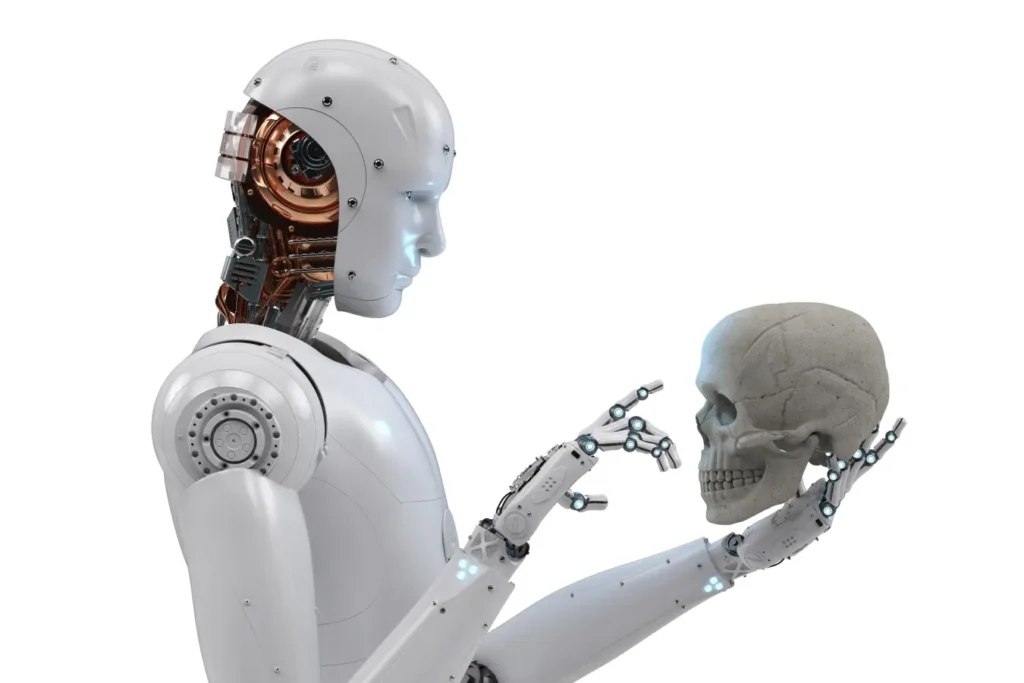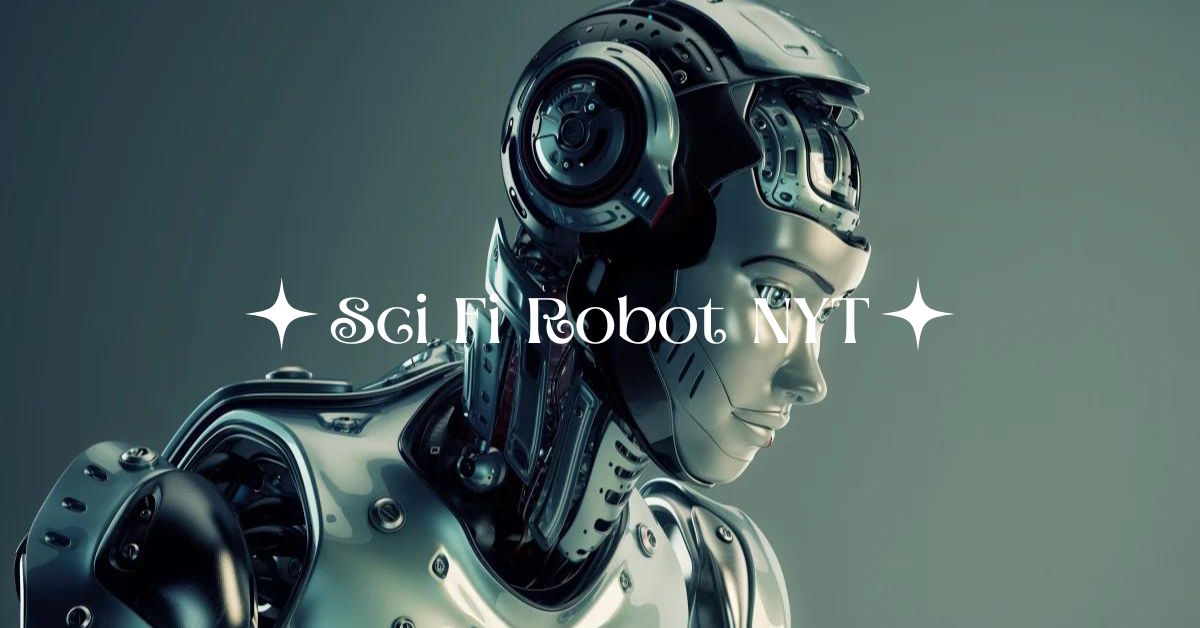Sci Fi Robot NYT – Unveiling the Mystery!
For decades, science fiction robots have captured our imaginations, blurring the lines between fantasy and possibility. The New York Times (NYT) has played a crucial role in unveiling the mystery surrounding these captivating creations.
Through insightful articles, reviews, and interviews, the NYT delves into the world of sci-fi robots, exploring their portrayal in literature and film, and examining the cutting-edge advancements happening in real-world robotics.
This article will embark on a journey through the fascinating world of “sci fi robot NYT,” exploring the evolution of these fictional beings, the impact of the NYT’s coverage on our understanding, and the exciting possibilities that lie ahead.
A Look at Early Sci-Fi Robots:
The concept of artificial beings stretches back centuries, even millennia. Early myths and legends hinted at automatons – mechanical beings capable of movement and even human-like actions.

However, the idea of robots truly took hold in the 20th century. Pioneering science fiction writers like Karel Čapek, who coined the term “robot” in his play “R.U.R.,” and Isaac Asimov, with his “Three Laws of Robotics,” laid the groundwork for the exploration of robots and their potential impact on society.
The NYT has explored these early works, examining how they shaped our initial understanding of robots and the ethical considerations surrounding artificial intelligence.
The Evolving Roles of Sci-Fi Robots:
Science fiction robots have undergone a remarkable transformation throughout literature and film. Here, we’ll delve into some of the most captivating portrayals:
Human-like Robots:
From the iconic C-3PO and R2-D2 in Star Wars to the sophisticated androids of films like Blade Runner, sci-fi has presented robots that resemble humans in form and function.
The NYT has explored the growing desire to create robots that mirror our physicality, analyzing the technological advancements and ethical dilemmas associated with such endeavors.
Intelligent and Autonomous Robots:
Beyond physical resemblance, artificial intelligence (AI) has become a defining characteristic of many sci-fi robots. Works like Isaac Asimov’s “I, Robot” explore the concept of robots with advanced cognitive abilities, raising questions about sentience, free will, and the potential dangers of unchecked AI.
The NYT has covered groundbreaking research in AI development, drawing parallels between these advancements and the fictional worlds depicted in science fiction.
Robots as Companions:
Sci-fi has also explored the emotional connection between humans and robots. Robots like Rosie the Robot Maid from The Jetsons or the AI companion in the film Her showcase robots that provide companionship, assistance, and even friendship.

The NYT has addressed the potential for robots to play a role in healthcare, elder care, and even emotional support, blurring the lines between technology and human connection.
Also Read: Raquel Welch Spouse – A Life In Love And Light – Beyond The Bonds Of Four Spouses
The NYT on Robots and Society:
The New York Times’ coverage of “sci fi robot NYT” isn’t just about exploring fantastical worlds. It plays a significant role in shaping our understanding of real-world advancements and the ethical considerations surrounding them.
Technological Advancements:
The NYT has consistently reported on breakthroughs in robotics, keeping readers informed about cutting-edge research and development. Articles might discuss advancements in areas like prosthetics, autonomous vehicles, or robotic assistants in surgery.
These reports not only showcase the incredible progress being made but also spark conversations about the potential applications of robotics in various aspects of our lives.
Ethical Considerations:
The NYT doesn’t shy away from addressing the ethical dilemmas associated with AI and robotics.
Articles might explore concerns about job displacement as robots become more sophisticated, the potential misuse of autonomous weapons, or the ethical implications of creating artificial beings with advanced sentience.
By raising these critical questions, the NYT encourages thoughtful discussion about the responsible development and deployment of robotics in the real world.
Also Read: A Bittersweet Bite: Exploring The Emotional Depth Of Asahina-San No Bentou Tabetai Chapter 5
The Future of Sci-Fi Robots:
The line between science fiction and reality continues to blur when it comes to robots.

Even More Human-like Robots:
Advances in areas like biomimicry and artificial intelligence could lead to robots that are even more indistinguishable from humans in appearance and behavior.
The NYT will likely continue to explore the ethical and social implications of this development, examining questions of identity and the potential for human-robot relationships.
Robots in Everyday Life:
Robots are already making strides in various industries, and their presence in our daily lives is likely to become more pronounced.
The NYT might discuss robots performing tasks in homes, assisting with transportation, or even playing a role in education and entertainment. Articles could explore the potential benefits and challenges associated with this increased integration of robots into society.
Also Read: Alevemente: Unveiling The Potential Of A Natural Wellness Revolution
The Need for Responsible Development:
As robots become more sophisticated, the need for responsible development becomes paramount.
The NYT will likely continue to play a crucial role in this conversation, advocating for ethical guidelines and regulations that ensure robots are used for the betterment of humanity. This ongoing dialogue will be crucial in shaping the future of our relationship with these intelligent machines.
FAQs:
1. What are some of the earliest examples of sci-fi robots in literature?
The concept of artificial beings has been around for centuries. Early examples include myths and legends featuring automatons, or mechanical beings capable of movement.
However, the term “robot” itself was coined by Karel Čapek in his 1920 play “R.U.R.,” which explored the ethical implications of creating artificial workers.
2. How has the New York Times (NYT) covered the evolution of sci-fi robots?
The NYT has played a significant role in exploring the portrayal of robots in science fiction. They’ve analyzed how early works like “R.U.R.” and Isaac Asimov’s “I, Robot” shaped our understanding of robots and AI.
The NYT continues to examine the evolving themes in sci-fi, including the development of human-like robots, robots with advanced intelligence, and robots as companions.
3. What are some real-world advancements in robotics that the NYT has covered?
The NYT keeps readers informed about cutting-edge research and development in robotics. Articles might discuss advancements in prosthetics, autonomous vehicles, or robotic assistants in surgery.
These reports not only showcase the progress being made but also spark conversations about the potential applications of robotics in various aspects of our lives.
4. How can the NYT’s coverage of “sci fi robot NYT” help us prepare for the future?
By exploring both the fantastical possibilities and the ethical concerns surrounding robots in science fiction, the NYT helps us have a more informed conversation about the future of robotics in the real world.
Their balanced approach allows us to consider the potential benefits of robots in everyday life while also critically examining the challenges and ethical dilemmas that need to be addressed.
Conclusion:
Science fiction robots have captivated audiences for generations, offering glimpses into a future where technology and humanity intertwine in fascinating ways. The New York Times (“sci fi robot NYT”) has served as a valuable bridge between these fantastical worlds and the real-world advancements in robotics.
Read More:





